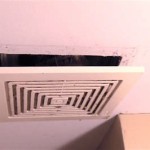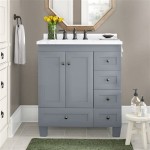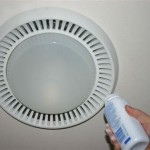```html
Are There Special Mirrors For Bathrooms?
Mirrors are essential components of any bathroom, serving not only a functional purpose but also contributing significantly to the aesthetic appeal of the space. While any mirror can technically be placed in a bathroom, certain types are better suited for the humid and demanding environment commonly found there. Understanding the specific characteristics and features of bathroom-appropriate mirrors is crucial to making an informed decision and ensuring longevity and optimal performance.
The bathroom environment presents unique challenges to mirrors. High humidity levels, temperature fluctuations, and potential exposure to water and cleaning chemicals can degrade the reflective surface and backing over time. Standard mirrors, not designed for these conditions, are more susceptible to issues like silver spoilage (black spots appearing due to oxidation), delamination (separation of the reflective layer from the glass), and general distortion.
Therefore, mirrors specifically marketed for bathroom use often incorporate design elements and materials that enhance their resistance to these factors. These specialized mirrors are designed to withstand the rigors of the bathroom environment while providing optimal clarity and visual appeal.
Moisture Resistance and Construction
The primary concern when selecting a bathroom mirror is its ability to withstand high humidity. The construction and materials used play a vital role in determining its moisture resistance. Standard mirrors typically have a silvered glass backing protected by one or two layers of paint. Bathroom mirrors, however, often feature a more robust construction designed to minimize moisture penetration.
One common technique is the application of multiple layers of protective paint to the backing of the mirror. These layers, often containing moisture-resistant compounds, create a barrier that prevents water vapor from reaching the silvered layer. The number of layers and the type of paint used can significantly impact the mirror's lifespan in a humid environment. Some manufacturers also use copper-free silver plating, which is less prone to corrosion and silver spoilage.
Furthermore, the quality of the glass itself can contribute to moisture resistance. Thicker glass is less likely to warp or distort due to temperature and humidity changes. Some mirrors utilize tempered glass, which is significantly stronger and more resistant to breakage than standard glass. While tempered glass is not necessarily more moisture-resistant, its increased durability makes it a desirable feature in a bathroom setting where accidental impacts are more likely.
Frameless mirrors, while aesthetically pleasing, are inherently more vulnerable to moisture damage if not properly sealed along the edges. Water can seep behind the mirror, leading to silver spoilage and delamination. Framed mirrors, on the other hand, offer an extra layer of protection to the edges, provided the frame is made of a moisture-resistant material like aluminum, stainless steel, or certain types of treated wood.
The adhesive used to secure the mirror to the wall is also a crucial factor. Standard adhesives may degrade over time due to humidity, leading to the mirror detaching from the wall. Bathroom-specific adhesives are formulated to withstand high humidity and temperature fluctuations, ensuring a secure and long-lasting bond.
Lighting and Features
Beyond moisture resistance, bathroom mirrors often incorporate features that enhance their functionality and aesthetic appeal. Integrated lighting is a common feature, providing task lighting for activities like shaving, applying makeup, and grooming. The type of lighting and its placement can significantly impact the overall look and feel of the bathroom.
LED lighting is increasingly popular due to its energy efficiency, long lifespan, and ability to produce a variety of color temperatures. LED lights can be integrated into the mirror's frame, placed behind the mirror to create a backlit effect, or incorporated directly into the mirror surface. The color temperature of the light is an important consideration; warmer tones (around 2700K) create a softer, more relaxing ambiance, while cooler tones (around 4000K – 5000K) provide brighter, more accurate lighting for tasks that require precision.
Some bathroom mirrors feature adjustable lighting, allowing users to customize the brightness and color temperature to suit their preferences and the time of day. This feature can be particularly useful for applying makeup, as it allows for accurate color matching in different lighting conditions.
Anti-fog technology is another valuable feature, especially in bathrooms with poor ventilation. These mirrors typically incorporate a heating element that gently warms the surface, preventing condensation from forming during showers or baths. Anti-fog mirrors eliminate the need to manually wipe the mirror, providing a clear reflection at all times.
Smart mirrors are becoming increasingly common, incorporating features like touch screens, voice control, and connectivity to other smart home devices. These mirrors can display information like weather forecasts, news headlines, and calendar appointments, and can even be used to control lighting, music, and other bathroom functions. While smart mirrors offer a high level of convenience and functionality, they also come with a higher price tag and may require professional installation.
Types and Styles
Bathroom mirrors are available in a wide variety of shapes, sizes, and styles to suit different bathroom layouts and design preferences. The choice of mirror can significantly impact the overall aesthetic of the space, adding visual interest, reflecting light, and creating a sense of spaciousness.
Rectangular mirrors are a classic and versatile option, suitable for a variety of bathroom styles. They are typically mounted above the vanity and can be oriented horizontally or vertically, depending on the available space and desired effect. Round mirrors are increasingly popular, adding a softer, more organic touch to the bathroom. They can be used as a focal point above the vanity or as decorative accents in other areas of the room.
Oval mirrors offer a compromise between the clean lines of rectangular mirrors and the curves of round mirrors. They are often used in traditional or transitional bathroom designs. Square mirrors can create a modern and minimalist look, particularly when paired with clean, geometric fixtures and hardware.
Framed mirrors offer a more traditional and decorative look, with a wide variety of frame materials, finishes, and styles to choose from. The frame can complement the other elements in the bathroom, such as the vanity, lighting, and hardware. Frameless mirrors, on the other hand, offer a sleek and contemporary look, emphasizing the mirror's reflective surface and minimizing visual clutter.
Vanity mirrors are specifically designed for use above bathroom vanities, often incorporating features like integrated lighting and magnification. These mirrors are typically smaller than standard bathroom mirrors and are available in a variety of styles to match different vanity designs. Medicine cabinet mirrors combine the functionality of a mirror with the storage space of a medicine cabinet. These mirrors are a practical choice for small bathrooms where space is at a premium.
Full-length mirrors are a valuable addition to any bathroom, providing a complete view of the body. They can be mounted on the wall or door, or they can be freestanding. Full-length mirrors can make a small bathroom feel larger and more spacious, and they are also useful for getting dressed and checking one's appearance.
Ultimately, selecting the appropriate bathroom mirror involves considering the specific needs and preferences of the user, the environmental conditions of the bathroom, and the overall design aesthetic of the space. Understanding the various types of mirrors available, their features, and their construction will enable a more informed and satisfying purchasing decision.
```
Why You Shouldn T Use Regular Mirrors In Bathrooms

7 Must See Bathroom Mirror Ideas

4 Pieces Every Small Bathroom Needs 2024 On Roomhints Com

51 Bathroom Mirrors To Complete Your Stylish Vanity Setup

4 Pieces Every Small Bathroom Needs 2024 On Roomhints Com

Whats The Best Bathroom Mirror To Go For Baths

17 Fresh Inspiring Bathroom Mirror Ideas To Shake Up Your Morning Lipstick Routine

Gatsby D Mirror Remer

Bespoke Bathroom Mirrors

27 Bathroom Mirror Ideas For Every Style Wall Decor
Related Posts







